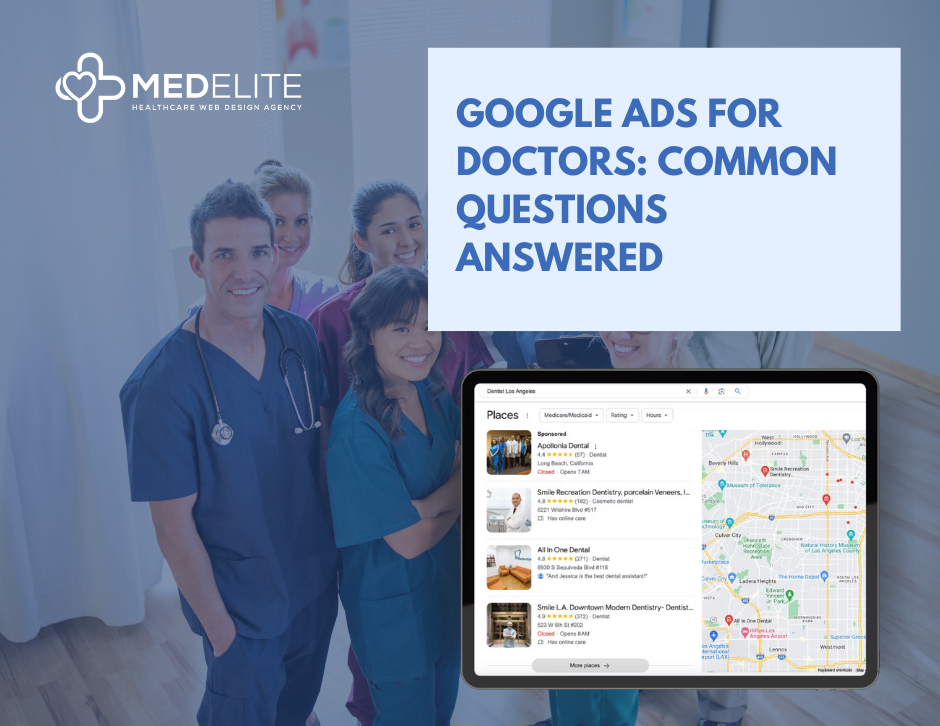5 Common Website Mistakes Doctors Make (and How to Fix Them)
- Marta Alexandrovna

- Jan 22, 2024
- 2 min read
Let's face it, healthcare websites are the new waiting rooms for modern patients. But just like you wouldn't diagnose a patient without a thorough examination, your website needs a checkup too. Here are 5 common website mistakes doctors often make, and how to fix them for a healthier online presence:

1. Outdated Design and Information:
Your website shouldn't look like it belongs in a medical museum. Ditch the pixelated stock photos and generic brochures. Invest in healthcare website design that's fresh, modern, and reflects your brand. Update your information regularly, especially staff profiles and insurance policies. Remember, a dated website screams "stuck in the past," not cutting-edge healthcare.
Fix it: Schedule a medical website design consultation, consider user-friendly layouts with clear navigation, and prioritize high-quality visuals that represent your practice. Regularly review and update content to ensure accuracy and relevance.
2. Mobile Blindness:
In today's smartphone-wielding world, ignoring mobile responsiveness is like leaving your stethoscope at home. Patients are searching for you on their phones, and a website that zooms in awkwardly or refuses to load is a guaranteed patient turn-off.
Fix it: Ensure your website is mobile-friendly! Opt for responsive design that adapts seamlessly to any screen size. Test it on different devices and browsers to identify and fix any glitches. Remember, a happy mobile patient is a returning patient.
3. Maze of Confusion:
Your website shouldn't be a medical labyrinth. Confusing navigation, hidden CTAs, and buried appointment buttons are surefire ways to send patients wandering (and likely, elsewhere). Make it clear, intuitive, and action-oriented.
Fix it: Focus on user-friendly navigation with easily identifiable menus and subcategories. Highlight your CTAs, whether it's booking an appointment or contacting your office. Consider website heatmaps to understand user behavior and optimize your layout for ease of access.
4. SEO Black Hole:
Think of SEO as your online map, guiding patients to your doorstep. Ignoring keywords, meta descriptions, and local listings leaves your website invisible in the digital void. Optimize your content with relevant healthcare terms and location-specific keywords.
Fix it: Research and implement relevant keywords throughout your website, including titles, body text, and image alt tags. Claim your profiles on Google My Business, Yelp, and other healthcare directories. Regularly analyze your website traffic and adjust your healthcare SEO strategy accordingly.
5. Content Ghost Town:
A website devoid of valuable content is like an empty waiting room – patients get restless and leave quickly. Fill your website with informative blog posts, patient testimonials, and engaging videos about your services, conditions, and healthcare tips.
Fix it: Create and share regular content that caters to your target audience's interests and concerns. Offer educational resources, answer FAQs, and showcase your expertise. Remember, valuable content builds trust, engages patients, and positions you as a thought leader.
By avoiding these common pitfalls and implementing these simple fixes, you can transform your website from a digital dead zone to a thriving patient magnet.
Remember, your website is your 24/7 online ambassador, so make it work for you!
Bonus Tip: Stay patient with your website! SEO and content marketing take time, so be consistent and focus on long-term growth.





Comments